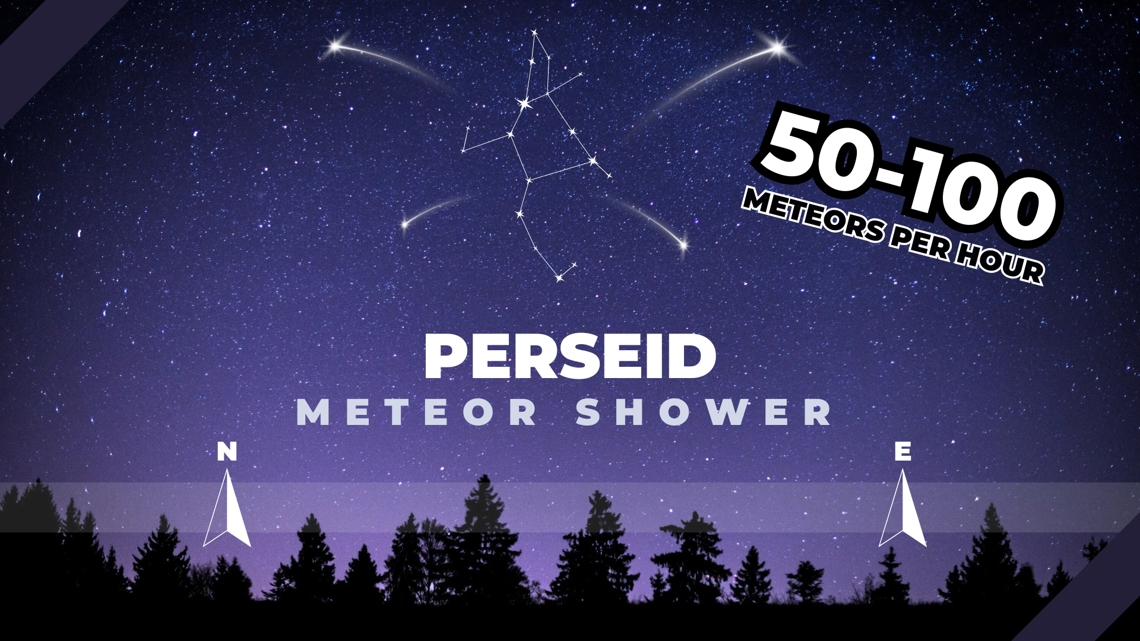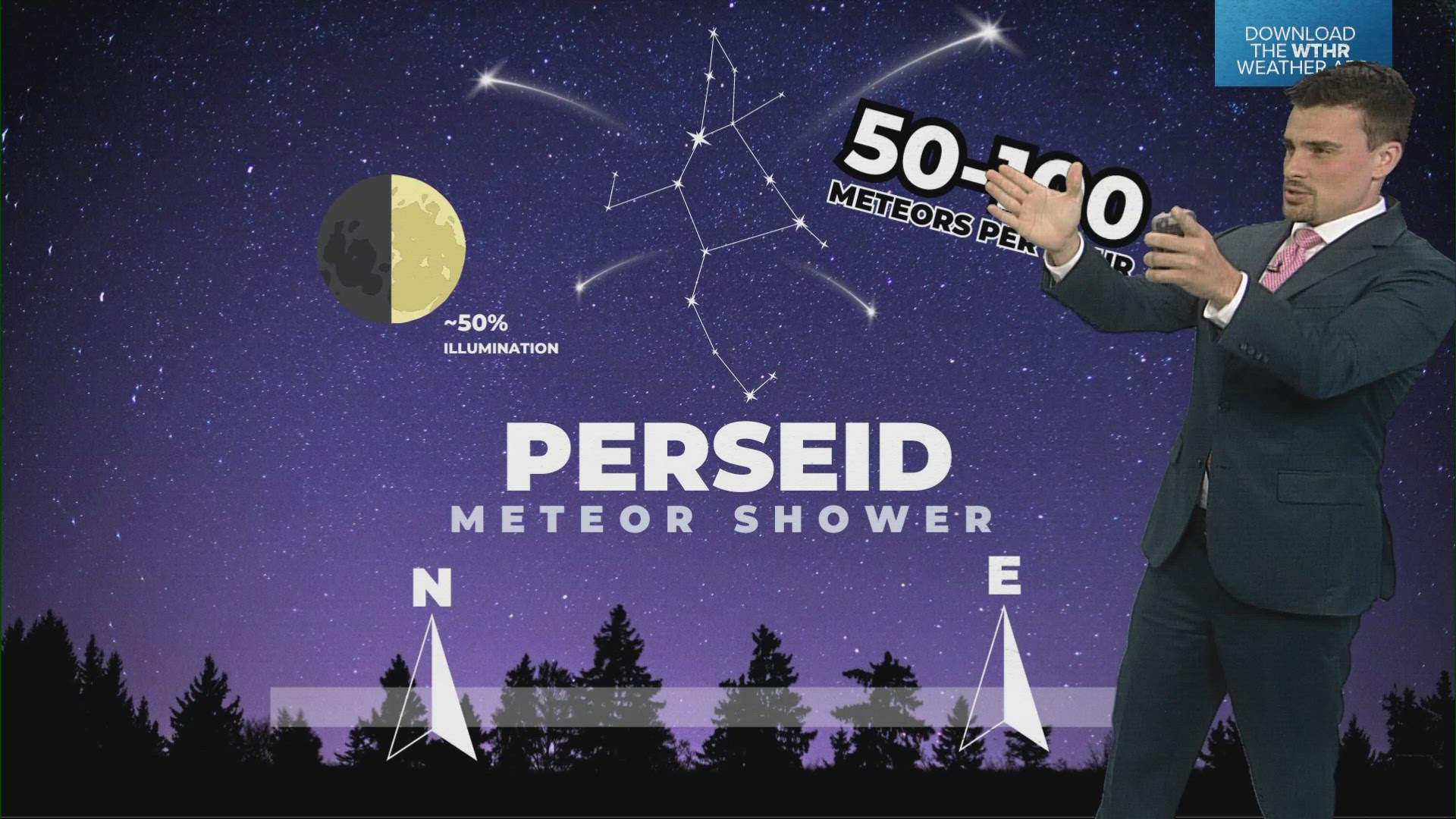INDIANA, USA — The 2024 Perseid meteor shower will peak Sunday night (Aug. 11) with a maximum of 50-100 meteors per hour possible in the night sky. Where should you look in order to see the most shooting stars?
Tap HERE for the latest hourly cloud forecast for the Perseid meteor shower in Indiana.
WHERE TO LOOK
The Perseid meteor shower is named after the Greek hero Perseus who killed the Gorgon Medusa, whose eyes could turn you into stone if you looked into them. Then he saved Andromeda from Cetus the sea monster.
The meteor shower gets it name from the radiant point of the meteors, or where it looks like they are originating. The Perseids seem to start from the Perseus constellation.


Perseus moves in the sky during the night, and so will the radiant along with it.
NOTE: You may not want to look right at the radiant. You have a better chance of seeing the shooting stars a little farther along the path of the shooting stars. If you look just at the radiant, you may see the start of the shooting star and miss the streak is produces farther along its path.
- 9 p.m. to Midnight: Look up, slightly in the NE direction (Perseus will be on the NE horizon)
- Midnight to 3 a.m.: Look directly up, very slightly in the NE direction (Perseus will be in the NE sky above the horizon.)
- 3 a.m. to 6 a.m.: Look directly up
Moon Illumination
About half of the moon will be illuminated Sunday night. We are approaching the waxing first quarter moon. The more moonlight you get, the more it can drown out the view of shooting stars. You want the sky as dark as possible.


This is better than last year. In 2023 we are near a full moon.
How many meteors will you be able to see?
The Persieds are usually on the of the best displays of shooting stars / meteors of the year. One reason is the warm weather. As you sit outside, you don't have to bundle up as much. However across Indiana we will be in the 50s Sunday night with very low humidity, so grab the jacket!
According to NASA, you may be able to see 50 to 100 meteors per hour. Realistically this may be a bit lower once you factor in moonlight and any slight city light you may have. Generally expect 20-50 meteors per hour, or about one every 1-3 minutes.
Tips to see the shooting stars
- Get away from city lights
- Allow your eyes at least 15 minutes to adjust to the darkness outside
- Grab a jacket! (chilly night in Indiana)
- Look up and slightly northeast
— 13News Meteorologist Matt Standridge

